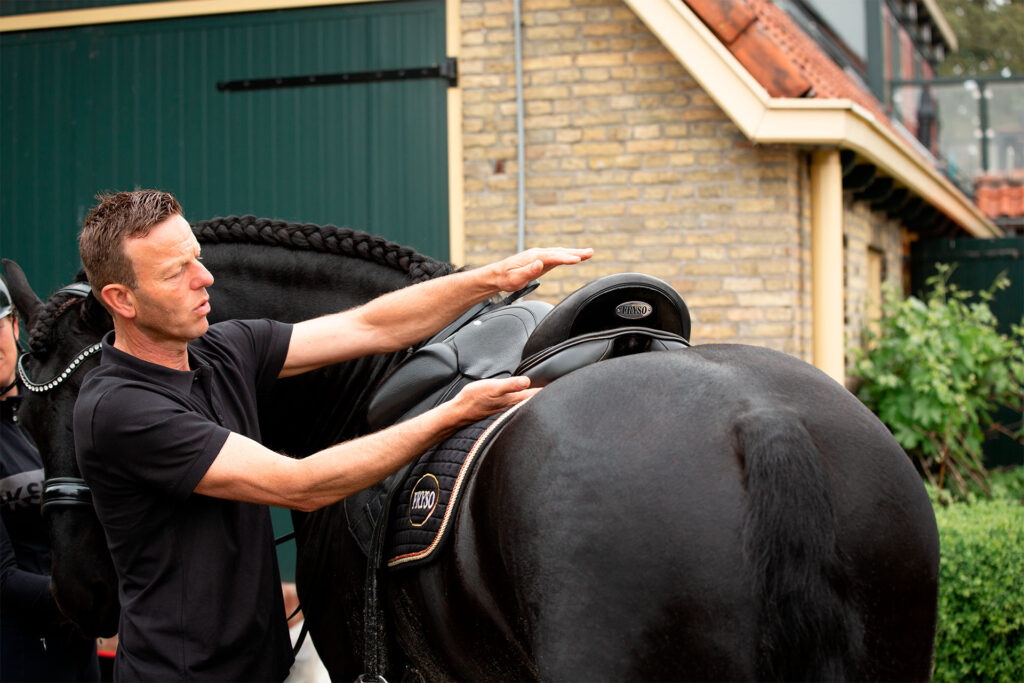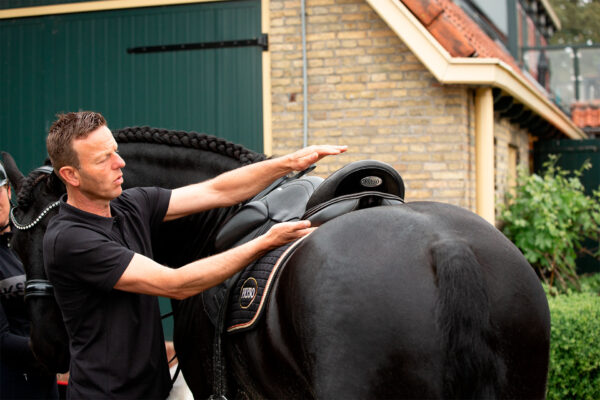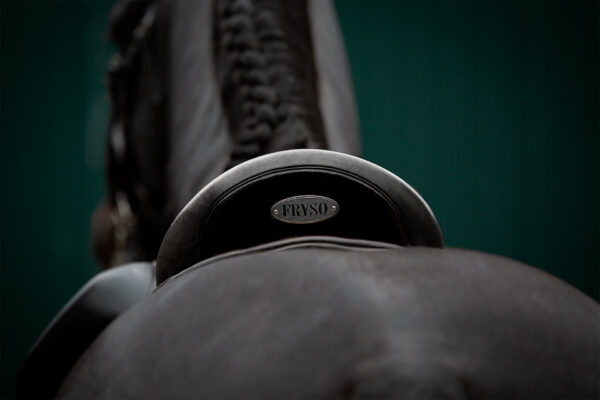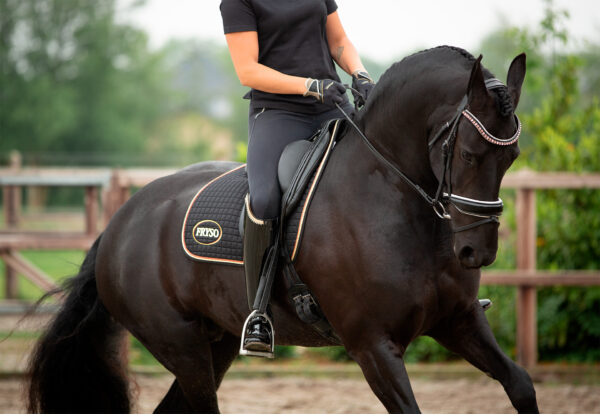- Seats
- Options
- Saddle options
- Saddle accessories
- Fryso Stirrup leathers
- Fryso Mono Stirrup leathers
- Fryso Stirrups
- Fryso Dressage Girth
- Fryso girth Anatomic
- Fryso girth Narrow
- Fryso Blankets
- Fryso Halter
- Fryso Foal Halter
- Fryso Bridles
- Fryso Saddle Cover
- Fryso Anniversary Saddle pad
- Fryso Max saddle pad
- Fryso Leather grease
- Fryso Care products
- Wintec Cair girth
- Wintec girth
- Prolite Tri Pad
- Half pads
- Saddle service
- Reviews
- News
Saddle passes and Friesian Horses
Author: Sybren Minkema – Friesian Horse Specialist
The breeding of Friesian horses has gained momentum in recent years. From a workhorse on the farm in the 60s, to an indispensable sport horse today! The Friesian Horse is doing particularly well in recreation and basic sport.
As a result, most saddle fitters sometimes pass a Friesian horse in review to measure a saddle or for a saddle check. What makes a Friesian horse different with saddle fitting compared to a 'regular' warmblood horse? We'll tell you below!

- 100% Handmade
- Own fitting service
- +25 years of knowledge & experience
- Real English leather + 1 year warranty
- 5 year warranty on the tree
- Visit our equestrian shop >
Would you like to know more about our saddles or schedule a service appointment?
- webshop?
- www.tweespan.com
The build of the Friesian horse is characterized by the following points. These all influence the position of the saddle and therefore the knowledge that a saddle fitter should have.
1. Vertical Neck Shape
2. Little bastard
3. Broad withers
4. Sunken Back
5. Ribbed
6. Built Down
7. Elevated Gaits
8. Slow hind leg
9. A lot of movement in connection back/loins
10. Broad shoulders
The combination of these factors does not make saddle fitting easy
Even if the saddle fits well according to the saddle fit criteria (standards), this does not always mean that it is also good for the horse. It should be realized that this is a gray area, in which the feeling for horses and their biomechanics will play a greater role.
Take, for example, the combination of wide withers with a downward trunk direction. On the one hand, you want to work with a wide tree to keep the withers and muscling around it free. On the other hand, you don't want to put the saddle too much around the withers, because then there is a chance that the pressure behind the shoulders will become too great due to the downward trunk direction.
Sunken Horseback
Or the combination of elevated gaits with a round-ribbed horse with the back slightly sunken. A horse with elevated gaits gives a lot of movement, on a round-ribbed horse the saddle has less stability. This gives the saddle more options to slide from left to right. When the horse is slightly sunken in the back, the movement in the back is more accentuated, which is not good for sliding a saddle.
Friesian horses
Due to the naturally less active hind leg, a Friesian horse has more movement in the back and loins. Often the pelvis is tilted the wrong way, pushing the loins and back down. As a result, the saddle misses the connection with the back when the horse starts to move.
The vertical neck of the Friesian horse does not help in most cases to improve the above points. Due to the elevated gaits and this neck position, the rider/rider is quickly put in the back of the saddle. Where we, as saddle fitters, do not want the rider/rider.
Squeezing Shoulder Pressure
The broad shoulder section in combination with a downward trunk direction makes saddles quickly squeeze at the shoulder. Because the girth spot in the Friesian horse is often more forward in relation to the end of the shoulder, this girth spot gives extra pressure to the front, which increases the pressure against the shoulder.
A saddle fitter with the right knowledge
The right saddle should always be a consideration of the combination rider/amazon and the (Frisian) Horse. The interest of the horse always comes first!
For good advice, contact a saddle fitter who also has sufficient experience with Friesian horses! You can of course expect our Fryso saddle fitters to have this knowledge in-house, after all, it is our speciality. You can contact us for the measurement of a new saddle, the purchase of a second-hand saddle or a saddle check of your current saddle.






Share: